Ages of Edge: The Transformation of Chinese Swords Across Dynasties
Ages of Edge: The Transformation of Chinese Swords Across Dynasties
China, with its ancient tapestry of history, has witnessed the rise and fall of countless dynasties, each leaving its mark on the annals of time. As early as the Spring and Autumn period to the early Warring States period, the brilliance of bronze swords reflected the valor of its warriors and the ingenuity of its craftsmen. These early blades, robust and ornate, laid the foundation for an evolution that spanned millennia. This article takes us on a journey from the earliest bronze forges to the steel masterpieces of the Qing Dynasty, exploring the rich and intricate heritage of Chinese swords.
Tips: In Chinese, double edge swords are called "Jian"剑, and single edge swords are called "Dao"刀. A good example longsword, claymore, they are called "Jian" in Chinese, Katana, sabre, they are called "Dao" in Chinese
Table of Content
- Spring and Autumn period
- Warring States period
- Han Dynasty
- Sui-Tang Dynasty
- Song Dynasty
- Yuan Dynasty
- Ming Dynasty
- Qing Dynasty
Spring and Autumn period to the early Warring States period (500BC - 350BC), Representative Sword - Bronze Swords 青铜剑 Qingtong Jian
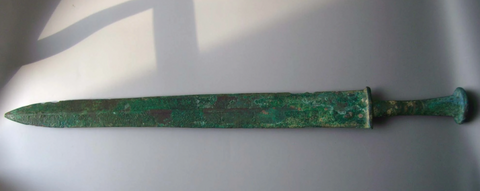
In this period:
1)By this time, the form of bronze swords was mature. The earliest appearance of composite swords was seen – these weapons used high tin content bronze for the blade, and lower tin content bronze for the sword spine. This combination made the blade hard and the spine flexible, preventing it from breaking easily.
The earliest Chinese swords were made of bronze during the Western Zhou period. This has been confirmed by numerous archaeologists and historians. Bronze, a mix of tin, lead, and copper, is notably hard. During the Spring and Autumn period, while soldiers in central China mainly used halberds and spears, infantry from states like Wu and Yue were skilled with swords. Their swords had long blades, like the sword of King Fuchai of Wu (夫差剑) and King Goujian of Yue(勾践剑), both of which were over 50 cm in length. At that time, Wu and Yue were leading in sword casting technology, and their renowned swords were famous throughout the country.
A bronze sword was a short weapon worn and held by hand. Wearing a sword was not only for self-defense, but it also symbolized the rank and status of the wearer, flaunting their wealth.
A bronze sword mainly consists of the blade and the hilt. Different parts of the sword have specific names. The front tip is called the "point", the raised centerline of the blade is the "ridge", the sloping sides of the blade are called the "flanks", and the cutting edge of the flanks is the "edge". The handle is called the "hilt". The hilt can be flat or round in shape. Some hilts have hand guards, also known as "guards" or "hilt collars". The end of the hilt often has a round "pommel", and some hilts have round "rings". The hilt is often wrapped with a rope called a "cord". The sheath is referred to as the "scabbard". Short swords are also called "daggers". High-quality bronze swords often had pommels and guards made of jade; such swords are generally called "jade-fitted swords".
Warring States period to the Qin Dynasty (350BC - 207BC): Representative Weapon - Bronze Swords 青铜剑
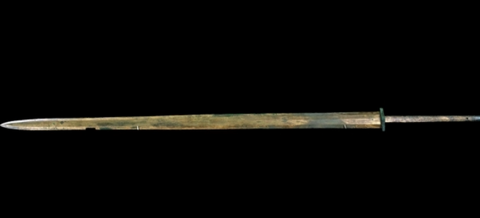
In this period:
1)Swords became longer, with longer handles that could be held with both hands.
2)Anti-rust chemicals (copper sulphide) were widely used to prevent rust on the sword surface.
During the Warring States period, the length of the sword blade continued to increase. Swords were also cast with different copper-tin ratios for the spine and blade. These bronze swords had a soft spine but a very sharp blade, enhancing their combat effectiveness. A bronze sword excavated from the terracotta warrior pit in Lintong County, Shaanxi Province, near the mausoleum of Emperor Qin Shi Huang, is 94 cm long. It has a thin, narrow blade that's very sharp, and its surface was treated for rust prevention. This sword represents the pinnacle of bronze sword-making technology.
The advancement in weapons during this time was closely related to the development of bronze casting. Bronze was used not only to make various daily utensils but also weapons. Bronze is an alloy of copper and tin, or copper and aluminum, or a combination of copper, tin, and aluminum. Weapons made of bronze are much more convenient to use than non-metallic weapons and are more lethal. In making bronze items, the hardness of the alloy varies depending on the ratio of tin or aluminum to copper. Since bronze weapons need to be both tough and sharp, more tin or aluminum is added compared to when crafting containers and other objects.
Han Dynasty (206BC - 220AD): Representative weapon - Han Sword 汉剑 Han Jian
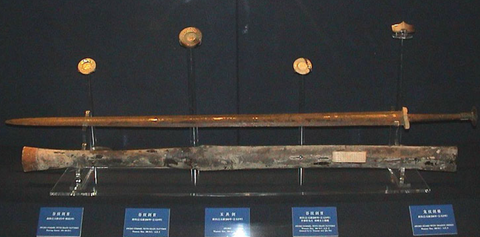
In this Period
1) Steel swords became widespread, replacing bronze swords.
2) The emergence of compound steel techniques (e.g. wrapped steel sandwiching a core) and edge tempering. This method would become a unique style of Chinese swords for the next 2000 years.
3) The repeated forging of steel technology (to remove impurities and distribute carbon more evenly within the steel) gradually matured. By the mid-Han Dynasty, it became known as the famous "refined steel" technique. This method would also become a hallmark of Chinese swords for the next 2000 years.
4) The appearance of ring-pommel swords.
5) The earliest use of sharkskin to cover the handles of swords used in the palace.
6) The earliest bronze and steel Dao began to flow into Korea and Japan.
Building upon the traditions of the Qin, the swords of the Han Dynasty had many similarities with those of the Qin Dynasty. Although iron swords had been excavated from the Spring and Autumn and Warring States periods, the large-scale transition from the Bronze Age to the Iron Age in weaponry occurred during the Han Dynasty. Due to the metallurgical advancements of the Han era, which overcame the length limitations of bronze swords, the Han swords became increasingly slender, lighter, and sharper, and they were widely used in the military by the early Western Han, replacing bronze swords.
The Han sword holds an irreplaceable position in the history of Chinese swords. Swords typically less than a meter in length were mainly one-handed, while those longer than 1.2 meters were two-handed. Due to material limitations, bronze swords before the Han Dynasty were generally restricted in length, with standard-issue bronze swords being around 50 cm. A rare 91 cm bronze sword was found in the Terracotta Army, representing the peak of bronze sword craftsmanship. However, the iron swords, which became widespread during the Han Dynasty, were around 100 to 110 cm in length. They were light, durable, and sharp, boasting superior performance. The emergence of the Han sword marked a significant turning point in the history of sword development, heralding a new era for swords.
Sui-Tang Dynasty (220 - 907): Representative Weapon - Tang Dao (Tang Sword) 唐刀
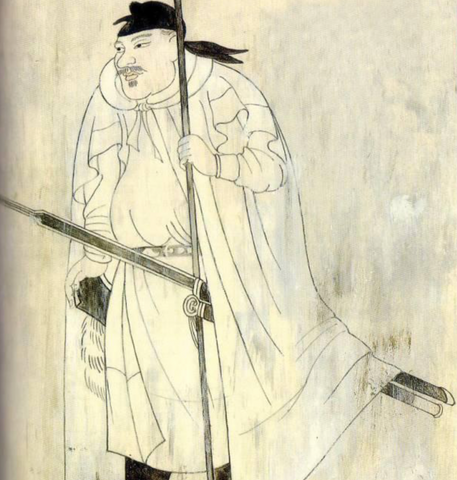
In this period:
1) The technique of refined steel continued to be passed down.
2) The earliest weapons made from wootz damascus steel were imported from India and Middle Eastern countries.
3) During the Tang Dynasty, the earliest round or square handguards were used.
4) A large number of Tang swords were exported to Japan.
5) Many Chinese swordsmiths from the coastal regions arrived in Japan, spreading Chinese sword-making techniques.
The term "Tang Dao" refers to a variety of blades from the Tang Dynasty, including horizontal swords and Mo Dao. The Tang sword, a successor to the Han sword, underwent improvements in its forging process and developed the "wrapped steel" technique, making it incredibly resilient. Visually, the Tang sword evolved significantly from the ring-pommel sword of the Han Dynasty, giving rise to two distinct weapon styles. Tang swords are notable for their ornate designs, with longer handles suitable for two-handed grip. There are four main categories: ceremonial swords, protective swords, horizontal swords, and Mo Dao.
Yidao 仪刀 Ceremonial Swords: These are closest in design to the Han Dynasty's ring-pommel swords. During the Tang Dynasty, they were primarily used by the imperial guard. The handles and sheaths of these swords were decorated with gold and silver, and they featured a component known as the "dragon and phoenix ring" at the end of the handle.
Zhangdao 障刀 Protective Swords: These are the most controversial Tang swords due to the loss of many historical pieces. There are two theories about their design: one believes they were short horizontal swords similar in length to the Japanese "ribs differential", around 15 to 50 cm, used as secondary weapons in close combat. The other theory suggests they were akin to machetes, roughly 80 to 100 cm long, and one of the primary weapons of Tang soldiers. Both viewpoints have their evidence, and there's no conclusive answer.
Hengdao 横刀 Horizontal Swords: Commonly referred to as "straight swords", these were one of the primary weapons of soldiers during the Tang Dynasty, with lengths ranging from 60 to 80 cm. They were typically carried by officials, constables, and palace guards. They can be likened to the batons used by modern-day police, and of the four styles, this was the most common. Historically, these swords were praised for combining the dominance of a Dao with the regal nature of a sword.
陌刀 Mo Dao: The most imposing of the Tang sword styles, Mo Dao is a type of long-handled large blade. With edges on both sides and a total length of about 3 meters (including the handle), it weighs around 15 kg. Its predecessor was the horse-cutting sword of the Han Dynasty. During the Tang Dynasty, it was used by infantry on the battlefield, particularly for cutting down horses, with specialized squads designated for this purpose.
The influence of Tang swords is profound. Many made their way overseas, especially to Japan. Numerous Tang swords, including the 丙子椒林剑 Heishi Shorin ken, 七星剣 Shichiseiken , and 水龍剣 Suiryu ken, are considered national treasures in Japan.
Song Dynasty (960 - 1279): Representative weapon: 斩马刀 Zhanmadao (Horse-Cutting Sword)
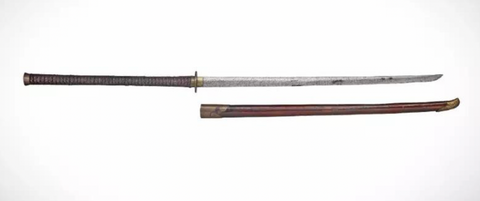
In this period:
1)In 1072 AD, Emperor Shen Zong of the Song Dynasty promoted the use of a new type of Zhanmadao to counter the armored cavalry of northern enemies. The blade of the Zhanmadao was 3 feet long, and the handle was 1 foot long. It was a two-handed weapon, specifically designed to cut through enemy armor and horses. This weapon was widely used up until the Ming and Qing Dynasties.
2) Expensive swords from the Middle East and Japan made their way into China. They became collectibles for wealthy officials, scholars, and merchants.
3) Toward the end of the Song Dynasty, the Mongolian army attacked Japan twice. The swords used by the Mongolian army (most of which were made in China and Korea) were considered more robust than Japanese swords. This influenced the Japanese to develop thicker-bladed swords with larger leading edges.
The military equipment of the Song Dynasty marks an important phase in the development of Chinese cold weapons. From the founding of the Northern Song Dynasty to the fall of the Southern Song Dynasty, there were ongoing wars with contemporaneous states such as the Liao, Jin, Western Xia, and Mongols. These large-scale wars with neighboring countries prompted the Song Dynasty to produce a myriad of weapon designs with distinct styles. Some of these weapons inherited features from the Tang and Five Dynasties, while others absorbed characteristics from the weapons of the grassland nomads, forming the prototype for later Ming and Qing Dynasty weapons.
During the Song Dynasty, the application of swords became more widespread. Common citizens used the simple Pu Dao, while the army mainly utilized eight types of blades (known as "Dao Ba Se"). Among these, the most famous was the Zhanmadao, a weapon specifically designed to counter the Liao and Jin cavalry. The design of the Song Dynasty's Zhanmadao was distinct: it was about 3-4 feet long, featured a ring-pommel at the top of the blade, and was wielded with two hands. On the battlefield, the Zhanmadao was used to target the weak points of the enemy, such as the legs and hooves of horses.
Yuan Dynasty (1279 - 1368): Representative weapon: The Mongolian Curved Saber
During the Yuan Dynasty (1279 - 1368), the Mongolian curved saber became popular in China and was widely used by both the military and civilians.
The Yuan Dynasty was ruled by the Mongols, so their influence on Chinese swords was huge, almost like a revolution. Their swords were often curved, which was good for fighting on horseback. The Mongols didn't know how to work with iron at first. The Song and Jin Dynasties didn't sell iron to them. But when the Mongols got some iron, they found the traditional Chinese swords too light and not comfortable. So, they made their swords thicker, heavier, and more curved. This became the unique Mongolian curved saber.
Ming Dynasty (1368 - 1644): Representative weapons: Chinese Dao

In this period:
1) At the beginning of the Ming Dynasty, the Damascus twistcore steel technology arrived in China, likely from Southeast Asian countries.
2) During the mid and late Ming period, due to low salaries and lax regulations, swordsmiths produced inferior weapons. When fighting Japanese pirates, the Ming's swords couldn't match the quality of the Japanese swords. The renowned Ming general, Qi Jiguang, took strict measures and ordered swordsmiths to produce better-quality weapons.
3) A large number of Japanese swords were imported into China.
4) Influenced by the Japanese sword, Chinese sword-making reintroduced the hatchet-shaped sword design that originated in the Sui Dynasty.
In the Ming Dynasty, the development of armors and weapons had matured, reaching a peak in Chinese history. Even though firearms saw unprecedented growth during this time, with the establishment of the leading global firearms force known as the "Shenji Camp," cold weapons like swords still held a significant position in the Ming army. The sword-making technology of the Ming Dynasty was more advanced than in previous dynasties, as they not only innovated but also incorporated and adapted foreign techniques.
Notable Ming swords include:
御林军刀 (Ming Dynasty Yulin Army Sword): This is essentially what's known today as the Miao Dao. Qi Jiguang, a renowned Ming general known for his resistance against Japanese pirates, researched and innovated the Japanese longsword techniques to develop the Qi Family Sword. This sword was slim, slightly curved, and had a long handle for two-handed use.
柳叶刀 Willow Leaf Dao: Named so because of its shape resembling a willow leaf. This Dao was widely equipped among the Ming infantry. Its gentle curve increased the cutting power. The blade width was also broader than that of a Japanese sword. This Dao was often used in pairs and was lighter and less sturdy than other swords.
雁翎刀 Yanling Dao: Known for its aesthetic design suitable for both combat and ceremonies, this Dao had a blood groove and a sharp edge.
绣春刀 XiuChun Dao: This was the signature weapon of the Ming dynasty's secret service, the Jinyiwei (Brocade-clad Guards) and the Imperial Guard. The design resembled common waist dao of the Ming era but was shorter and curved.
The weapons of the Ming era showcased a blend of traditional techniques with innovations and influences from other cultures, ensuring that their weaponry was both functional and beautiful.
Qing Dynasty (1644 - 1911): Representative weapons: Qing Dao
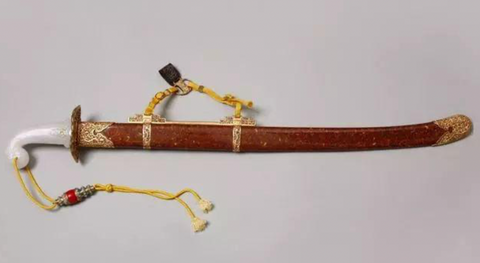
In this period:
1)During Emperor Qianlong's reign, there was a significant improvement in the quality of Dao and other weapons used by both Manchu and Han soldiers in the court. This period marked a new peak, especially when compared to the late Ming Dynasty.
2)The "Oxtail Dao" 牛尾刀emerged in the late Qing era, becoming popular among civilians. Soldiers also adopted it.
3)By the end of the Qing Dynasty, firearms began to replace cold weapons in warfare. Swords transitioned to more ornate designs, serving as symbols of status and decorative accessories, thus their practicality decreased.
The "Qing Dao" refers to the standard military sword of the Qing era. These standard military swords included types such as 顺刀 Shun Dao, 窝刀Wo Dao, 札刀Zha Dao, 朴刀Pu Dao, and 斩马刀 Zhanmadao.
Popular during the Qing Dynasty, the Qing Dao became an official sword style. Its design was likely influenced by the cultural exchanges between many countries at the time. The most prominent influences came from China and Japan, but certain designs also showcased elements from India, Turkey, and Mongolia. The Qing Dao integrated the best features from both ancient and contemporary designs, and from both domestic and foreign influences, making it a classic.
Compared to other civilian blades like machetes and daggers, waist swords (or sabers) held higher artistic value. They were finely crafted, typically made using a combination of steel forging, balancing both strength and flexibility. Apart from the commonly seen 雁翎刀 Yanling Dao, 柳叶刀 Willow Leaf Dao, and 牛尾刀 Oxtail Dao, there were variations in the tip designs, with unique versions like the 雁翅刀Yanchi Dao, 鱼嘴刀Fish Mouth Dao, 鲨鱼头刀Shark Head Dao, and 卷首刀 Rolled Head Dao. Many of the blades had blood grooves, segments, or turnbacks, with differing lengths and varying thicknesses.
Some swords bore engraved inscriptions, stamps, symbols of the Five Elements and Eight Trigrams, Yin-Yang Taiji, and other auspicious symbols or motivational phrases. The decorative patterns on the fittings varied widely, from traditional floral motifs and auspicious animals to themes like the "Three Stars of Fortune", "Eight Treasures", "Fortune Characters", "Magpies on Branches", and "Instant Promotions upon Mounting a Horse". The materials used for these fittings were typically iron, brass, and bronze, with craftsmanship techniques including engraving, openwork carving, and for the more luxurious pieces, silver inlay and gilding. Such exquisite craftsmanship suggests that even among commoners in the Qing Dynasty, there was no shortage of high-quality, artistic Dao.
Summary
As we trace the contours of China's sword-making legacy, it's evident that these blades are more than mere tools of warfare. They are symbols of a civilization's perseverance, artistry, and adaptability. From the gleaming bronze swords of antiquity to the Qing Dynasty's intricate steel masterpieces, each epoch of design encapsulates the spirit of its era. These swords are not just artifacts; they are testament to China's enduring martial and cultural heritage.






















identical to the Chinese Yaomaodao but are nearly impossible to fine. The blade would be 27-28 inches, and the handle about 6-7 inches. Anything I have seen thus far is rather garish with
engraving and coloring on the blade. Can you be of any help in finding such a piece. These Katana-type swords are NOT traditional Korean swords. Thanks in advance.